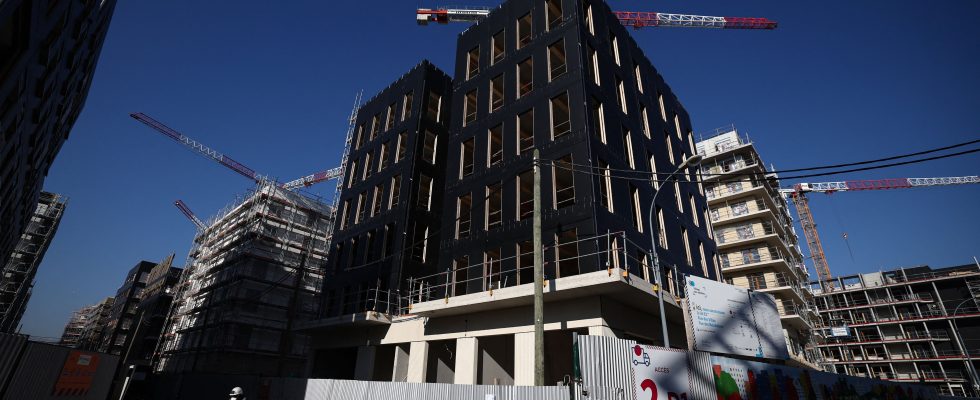The health of French companies is monitored like milk on fire. New figures for the month of October in support, the Banque de France wants to be reassuring. “We have 52,695 cumulative failures over the last 12 months, which remains well below the historical average for 2010-2019, of around 59,000 per year,” underlines Emilie Quema, Director of Business. And while the growth rate of 36% from one year to the next may be impressive, it must be put into perspective. First, because the point of comparison for October 2022 is very low – public aid during the Covid period brought a reprieve to a number of companies and froze insolvencies, including the most fragile. Then, because this rebound is slowing down: last March, the annual increase exceeded 50%.
More than 210,000 jobs at risk
Nothing to worry about then? Although the sky is not yet stormy, gray clouds are nevertheless accumulating. With the first reason for concern being the size of those involved. “Microenterprises [NDLR : moins de 10 salariés] constitute 90% of failures. But in recent months, larger companies, SMEs or even ETIs, are increasingly concerned,” recognizes Emilie Quema. The general director of Rexecode Denis Ferrand drives the point home. “Excluding micro-enterprises, the number of failures exceeds 2019 and even the end of the 2008-2009 crisis, it’s a change of era.” The Altares firm judges that SMEs today represent 8.2% of defaults, or 2 points more than at summer 2019.
With a potential economic impact that is all the more painful. To evaluate it, the Banque de France estimates “threatened” jobs, compiling the number of employees of companies in receivership or liquidation. Historically, the counter is around 170,000. At the end of October, there would be more than 210,000. “However, let us remember that more than a million net jobs were created between the fourth quarter of 2019 and mid-2022, and it “There have never been so many people working in France”, adds Emilie Quema, adding that there have been “26 times more business creations than companies insolvent” over the past year. But beyond the positions directly threatened, other risks emerge: an SME which disappears, suppliers who lose their past debts, their future income, and a local network of businesses whose employee clientele evaporates.
“We’re getting into the hard part”
All eyes are therefore on 2024 and the fear of seeing France hit a wall of bankruptcies. Macroeconomic indicators have not yet turned red. No recession on the horizon in France, unlike its big neighbors, a low unemployment rate and even decelerating inflation. But while supply problems or labor shortages are not completely resolved, companies say they are struggling with demand. “Until now, the context was conducive to an increase in prices to compensate for the increase in costs. This period is over, asserts Denis Ferrand. Added to this is the increase in financial charges, which will bite into margins spectacularly. : 10 points of gross operating income are now allocated to the payment of interest on loans, compared to zero last year!”
The economist also highlights the worrying trends in the latest Bpifrance survey of VSEs and SMEs: “All indicators are deteriorating, without collapsing. Payment times are considered high, a growing proportion of business leaders declares that access to bank financing is difficult, cash flow is eroding… We’re getting into the tough stuff.” At the CPME, the feedback from member bosses is hardly more encouraging, testifies its president François Asselin. “In the temporary work sector, we are seeing a slowdown in hiring, a leading indicator. And real estate, often the engine of the economy, is devastated,” he laments. Altares’ director of studies, Thierry Millon, confirms the last point: “The reversal was violent with the rise in rates. Real estate agencies and residential developers have been on the front line. Since the beginning of the summer “, the increase in failures is accelerating among those involved in finishing work, such as electricians or plasterers. Structural work is in turn at risk, with order books running out.” The expert recalls that construction, historically, concentrates a quarter of annual defects and expects this proportion to increase in 2024. Other sectors in the breach: the automobile sector – dealerships in particular – as well as the food industry , convenience stores and other grocery stores. Thierry Millon also notes “increasing tensions in metallurgy, printing, waste treatment…”.
Social debts and reimbursement of PGE
In this French economy which is starting to hum, the impossibility of meeting a deadline can suddenly intervene for a company faced with soaring costs, social debts owed to Urssaf, or even the repayment of its loan. guaranteed by the State (PGE), these bank loans distributed liberally during the health crisis to allow small companies to brave the storm.
The Banque de France is monitoring this position on behalf of Bercy. “143 billion euros of PGE have been granted in total, often for a period of 6 years. The last deadlines will arrive in 2026-2027 but more than half of the PGE have already been reimbursed. We do not see in our figures difficulty on this subject, affirms Emilie Quema. This system worked well, it helped the right companies at the right time. Certainly, but “in small structures, managers no longer pay themselves to be able to repay their PGE. There are a lot of weaknesses”, warns François Asselin.
.
